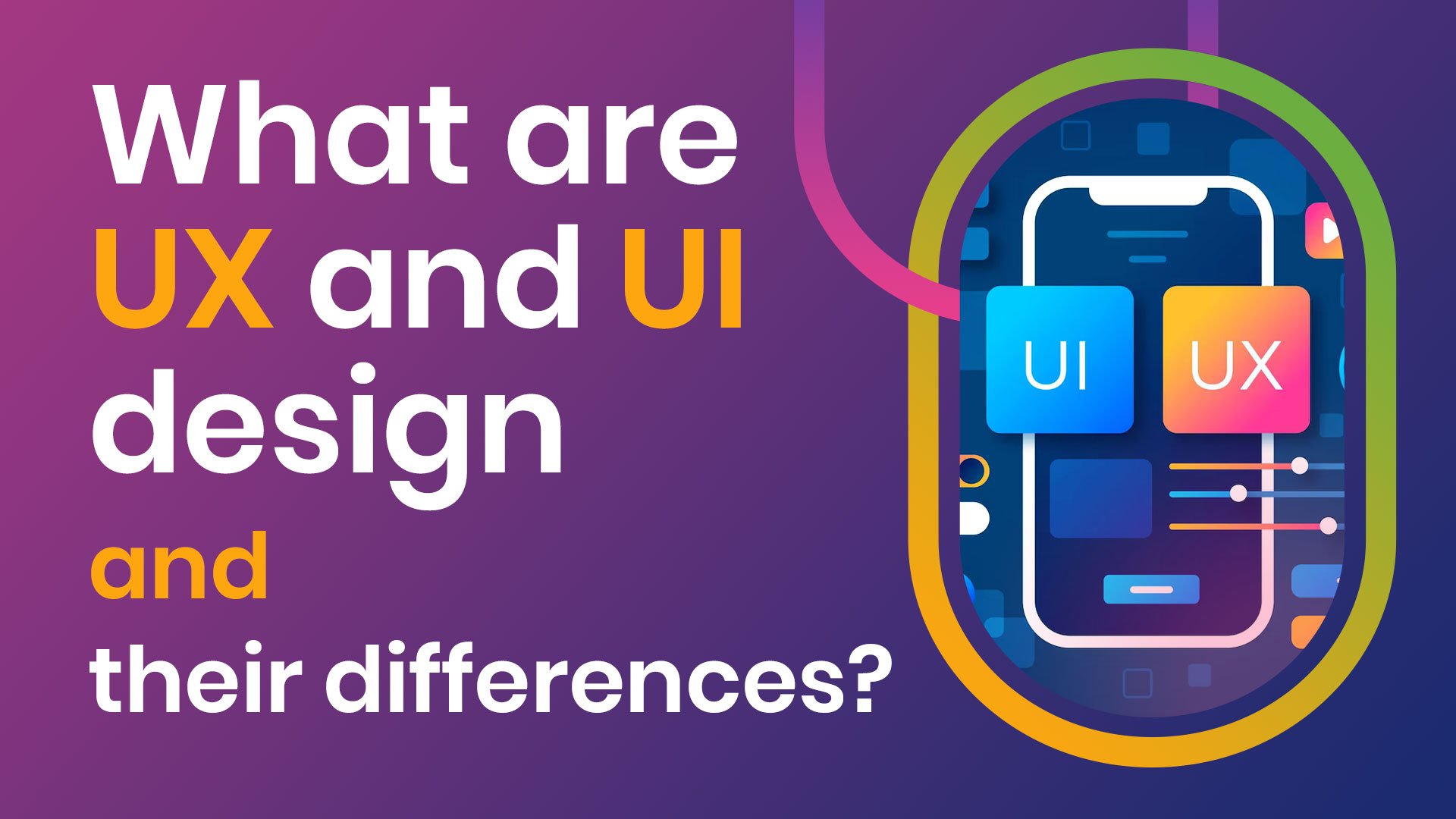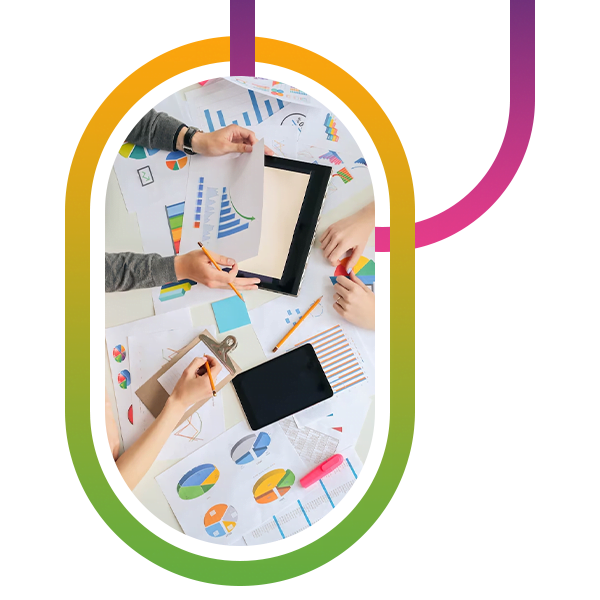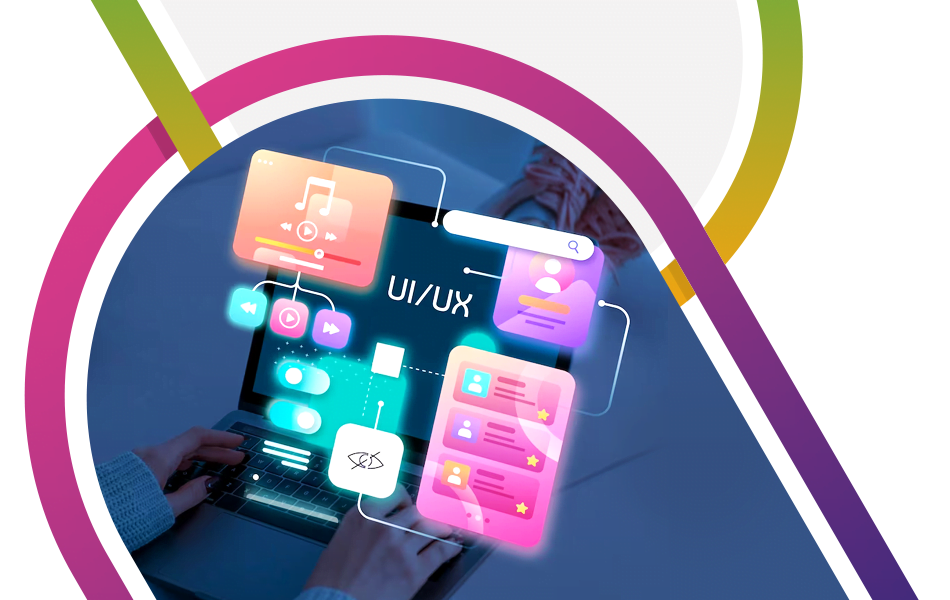
Free Digital Marketing Review
Elevate your online strategy with a personalised report and expert insights. Achieve your business goals faster!
What are UX and UI design and their differences?

What are UX and UI – An Introduction
Whenever a new website, app or software-based product is built, user experience (UX) and user interface (UI) design play a role. In other words, UX is like the vehicle’s performance, and UI is the looks and styling of the vehicle.
While UX and UI are often viewed as one entity and have some skills in common, they are two separate processes. They represent distinct yet deeply interconnected aspects of design that shape how users interact with and perceive a product.
In this blog post, we’ll examine the significance of UX and UI design, exploring their roles, differences, and how they would work to create a seamless digital experience for users.
User Experience (UX)
User experience design enhances user satisfaction by improving the usability, accessibility, and overall pleasure of interacting with a product. At its core, UX design is about understanding the needs and behaviours of users and crafting solutions that address those needs effectively. It is the how, what, where, why and who of using a product, for example:
- How the product will be used
- What people will be using it for?
- What are they trying to achieve by using it?
- Who are they?
UX designers employ various methodologies, including user research, wireframing, prototyping, and usability testing, to create intuitive and user experiences.
At every stage of product development, UX designers strive to empathise with users, anticipate their actions, and streamline their journey through the product. This involves mapping out user flows or journeys, designing intuitive navigation systems, and optimising interactions to minimise friction and maximise engagement. By prioritising user needs and preferences, UX design fosters trust, loyalty, and long-term user satisfaction.
UX designers also try to accommodate business needs. People often make the mistake of thinking UX designers are just interested in the user’s experience of the website or app. It is partly about getting information from the user about the product journey to work and for future marketing and sales needs. A good UX designer will blend brilliant signposting and frustration-free journeys with the needs of a business.
User Interface (UI)
Conversely, user interface design concerns the visual and interactive elements of a product that users interact with directly. UI designers translate UX goals into tangible interfaces, shaping products’ look, feel, and functionality. From colour schemes and typography to buttons and icons, every visual component is meticulously crafted to convey meaning, guide user actions, and evoke desired emotions.
UI design is not merely about aesthetics but creating a cohesive visual language that communicates brand identity and reinforces usability. Consistency, hierarchy, and clarity are paramount in UI design, ensuring users can effortlessly navigate the interface and accomplish their goals. UI designers refine the visual presentation through prototyping and iterative refinement to align with user expectations and business objectives.
How does UX and UI work together?
The collaboration of a UX designer and a UI designer works in unison together throughout a product design process to deliver the best product possible.
While UX and UI design are separate processes, their presence is indispensable in delivering exceptional digital experiences. The intersection of UX and UI design represents the sweet spot where functionality meets aesthetics, form harmonises with function, and user needs are seamlessly addressed through intuitive interfaces.
In these processes, UX lays the groundwork by understanding user behaviours, defining user journeys, and establishing a solid framework for interaction. UI then breathes life into this framework, transforming wireframes and prototypes into visually captivating interfaces that resonate with users on an emotional level.
By working together closely throughout the design process, UX and UI designers ensure that every interaction, from the click of a button to the swipe of a screen, is purposeful and delightful. They iteratively refine their designs based on user feedback and evolving requirements, continuously striving to elevate the user experience to new heights.
Conclusion
The importance of UX and UI design cannot be overstated. By combining user principles with visually compelling interfaces, designers can shape how people engage with technology, products, and services. Whether it’s a mobile app, website, or software platform, investing in UX and UI design is not just about creating products; it’s also about crafting a friendly experience that leaves a lasting impression on users. So, the next time you interact with a product, take a moment to appreciate the seamless fusion of UX and UI design that makes it all possible.

Need help with your website and marketing?
Book a FREE growth strategy session with our experts
Our award-winning team will review your website and marketing goals to provide you with crucial insight and advice.

4.8 STAR
Google reviews
With 10+ years of experience, Link Digital has helped hundreds of businesses to succeed online. We can help yours too!

